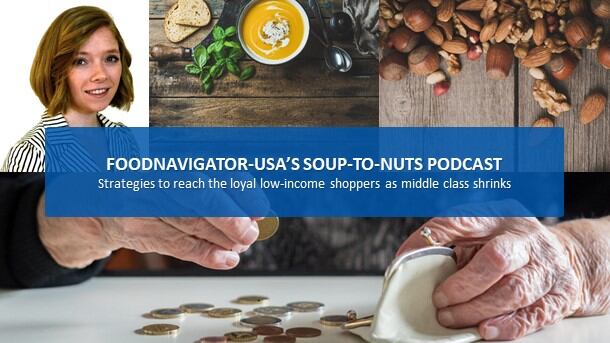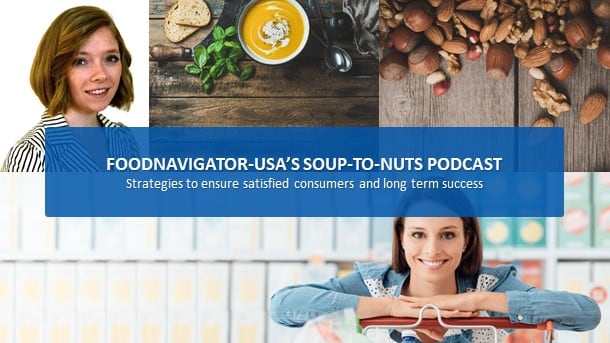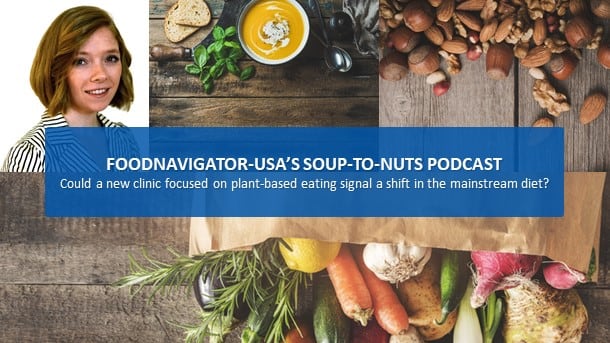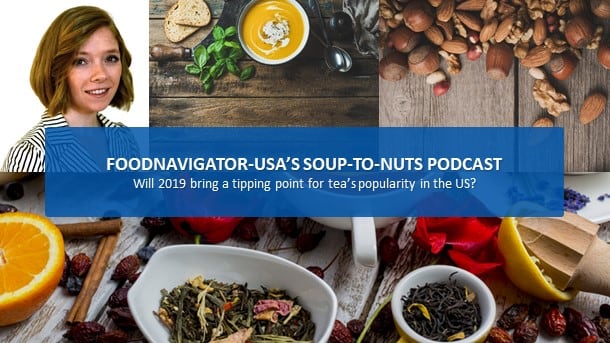According to The Hartman Group’s recently published report titled The Business of Thrift: Understanding Low-Income and Value-Oriented Consumers, 56% of Americans technically qualify as low-income based on the federal poverty guidelines.
That is a huge chunk of the population that reaches well into what traditionally would have been considered the middle class. And they are struggling to afford everyday expenses, including food and beverage. It is also in many ways an invisible group, as they often are underrepresented in typical market research for various reasons – prompting many retailers and manufacturers to overlook their needs, and the marketing potential and loyalty that they could generate by catering to this group’s unique needs.
In this episode of FoodNavigator-USA’s Soup-To-Nuts Podcast, Sarah Marion, the director of syndicated research at The Hartman Group, and Robertson Allen, a senior consultant in The Hartman Groups’ retainer services, share insights on how low-income Americans approach grocery shopping, including why this is a group that retailers and brands cannot ignore. They also talk about how this group compares to another sizable and influential group of shoppers – those who prize value over all else.
The economic state of the union
The current economic state of the union is the result of a decade of decline that started in earnest during the great recession the years ago, according to Allen.
“The middle class is shrinking and has been shrinking for quite some time,” during which the aggregate household wealth has really shifted towards higher income earners and the residual effects of the recession continue to take a toll on lower earners and younger Americans, he said.
“The great recession happened ten years ago, but there is still all sorts of different residual issues,” with millennials being particularly hard hit by debt and limited opportunities, he said.
As such, he said those who make a median income of $62,000 and who are supporting a spouse or children now qualify as low-income, which means low-income shoppers “very much are the people who are regular shoppers at grocery stores.”
As ‘regular shoppers,’ Marion added that many low-income consumers want the same things as their higher income counterparts when it comes to health, wealth and their diets.
“A substantial subset of low-income shoppers really care about attributes that tend to cost more, like natural, organic, non-GMO, premium culinary things,” she said.
As such, many of the marketing strategies retailers and brand use are reaching all levels of consumers. However, she added, low-income shoppers’ limited resources means they cannot always reach them without making sacrifices elsewhere, which can generate frustration.
A loyal group worth pursuing
A lot of that stress comes from working multiple jobs to make ends meet, which means this group places a premium on convenience and predictability – making them very loyal, and therefore, a group that brands and retailers could benefit from by supporting.
“There is a lot of loyalty that low-income consumers have to specific retailers because a lot of times they know what they are getting, they know about the prices range, they are knowledgeable about the rhythm of the sales and what they might be able to get cheaper at different times of the month,” Allen said.
From a manufacturer perspective, Marion added, lower-income shoppers tend to stick to the basics and are less likely to buy fun, inessential foods, like ice cream and snacks, but that better-for-you and healthier items may present more of opportunity because it allows them to get two birds with one stone.
Allen also noted that many low-income shoppers are trying to keep their total bill down, which means they are more likely to buys smaller less expensive packages, even if the cost per unit is higher than a bulk version. So retailers and brands that offer a variety of sizes are more likely to win with this group.
Ecommerce is a missed opportunity that could deliver results
Given the time constraints as well as transportation struggles many low-income consumers face, Allen and Marion said retailers, and to a lesser extent brands, could see a lift by better leveraging ecommerce as a convenient, time-saver for this group.
Allen and Marion suggested that retailers might be able to sway more low-income consumers to shop online by lowering the required spends to qualify for deliver, making coupons immediately available rather than requiring them to redeem them by clicking on an extra button or logging in to an account. Similarly, the shopping experience needs to be seemless across platforms, including mobile as low-income shoppers might not have the same access to a computer as higher income shoppers.
Brand manufacturers also can leverage this group’s need for fast convenience by offering options that can be kept on hand and come together quickly – two attributes well suited for the freezer section in particular, according to Marion and Allen. Although they are quick to point out that this category has notable hurdles to overcome as well.
Other strategies for reaching low-income shoppers depend heavily on why a low-income shopper has limited funds and who exactly they are – a task that may be easier said than done given that this group cuts across demographic and cultural lines.
The difference between low-income and value-oriented shoppers
As retailers and brands pursue the opportunities presented by low-income consumers, Marion and Allen warn them not to confuse low-income consumers with value oriented shoppers, who are not as strong of a bet for additional marketing efforts.
They explain that value shoppers are looking for deals and cost savings anywhere they can get them, which means hopping between retailers and brands.
This lack of loyalty means that retailers and brands might be better off courting low-income consumers, because at least with them there is a chance that they will come back time and time again.




